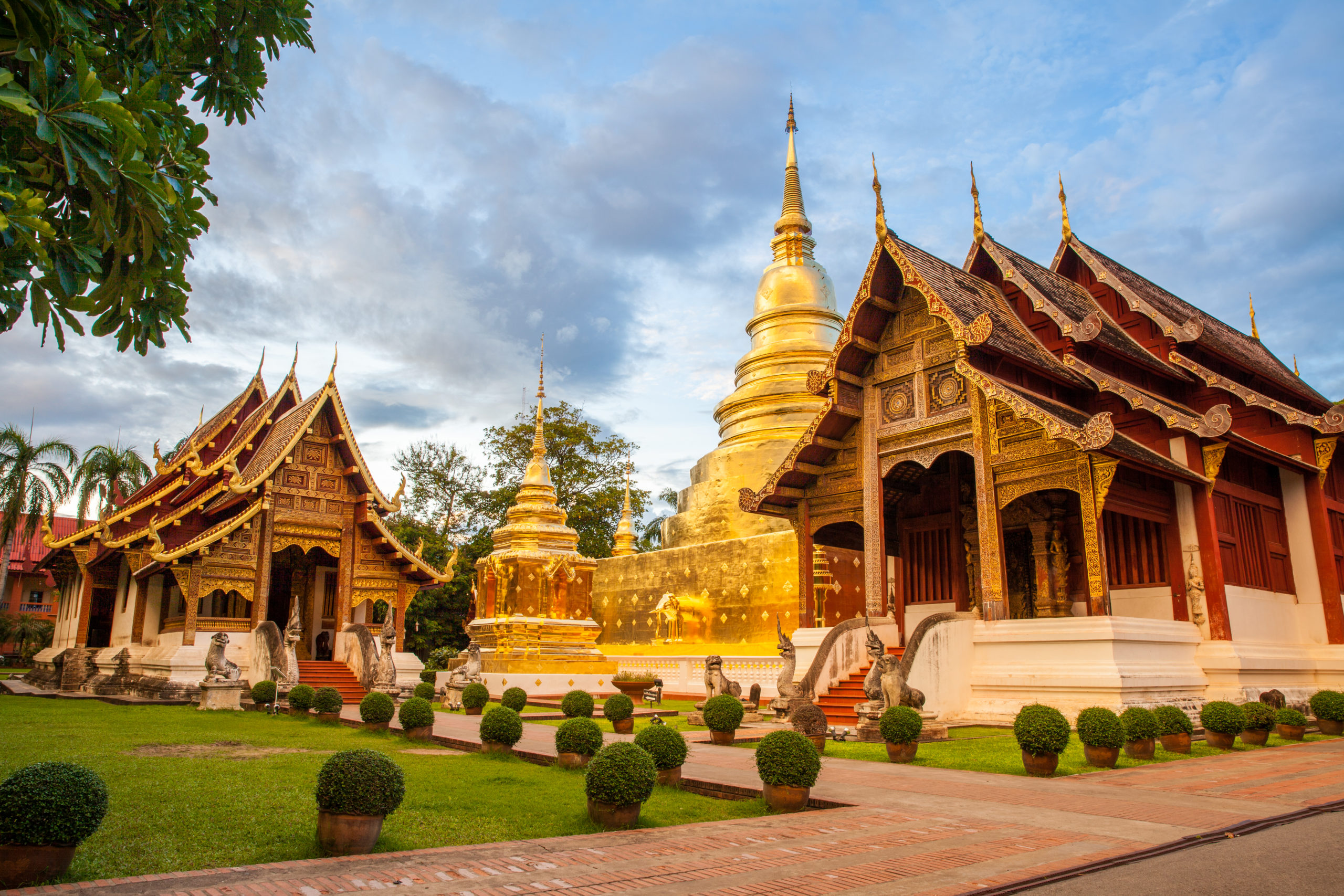Chiang Mai, the former capital of the Lanna Kingdom, stands apart as a unique gem in northern Thailand. Far from Bangkok’s relentless pace, this city moves to its own rhythm. The historic center preserves its ancient moats and remnants of city walls that encircle over 300 Buddhist temples, bustling markets spilling onto sidewalks, and a vibrant local arts scene.
Temple Treasures
Wat Phra That Doi Suthep watches over the city from its mountain perch at 3,280 feet above sea level. After climbing 309 steps flanked by golden naga serpent railings, the panoramic view rewards every bit of effort.
In the old city, Wat Chedi Luang bears the scars of the 16th-century earthquake that cracked its massive chedi. Wat Phra Singh houses a revered Buddha statue that faithful devotees have honored for centuries, surrounded by remarkably preserved wall frescoes.
Wat Chiang Man, founded in 1296, holds the distinction of being the city’s oldest temple. It shelters two precious Buddhas: one carved from rock crystal, the other from marble. More unusual is Wat Umong, where you descend into tunnels decorated with ancient paintings before wandering through its forest park.
At Wat Suan Dok, dozens of white chedis contain the ashes of the former royal family. The site glows golden at sunset.
Natural Wonders

Doi Inthanon National Park climbs to 8,415 feet (2,565°C) – the country’s highest peak. Up there, forests disappear into clouds and over 400 bird species make their home. Waterfalls cascade down slopes through moss and giant ferns.
Karen, Hmong, and Lisu villages clinging to the mountainsides still live according to their traditions. In Mae Kampong, you can stay with local families and discover how tea grows at altitude, far from typical tourist trails.
The Mae Sa Valley unfolds its terraced rice fields and coffee plantations. Centers care for elephants rescued from mass tourism – choose those that truly respect the animals. For adrenaline seekers, head to Mae Taeng: white-water rafting through rapids or zip-lining above the jungle canopy.
The hot springs of San Kamphaeng bubble amid tropical vegetation. Chiang Mai’s “Grand Canyon” – a flooded former quarry – draws locals who come to dive from the red cliffs.
Authentic Experiences

Cooking classes begin early morning at the market. You learn to distinguish lemongrass from galangal, choose chilies by their heat level, before heading to the kitchen to master the sweet-salty-sour-spicy balance of authentic pad thai.
On Saturdays, Wualai Road transforms into an artisan gallery. Sundays belong to Ratchadamnoen Road. Stalls overflow with textiles woven in mountain villages, hammered silver jewelry, carved wood, and ceramics with ancient glazes.
In November, Loy Krathong fills the sky with rice paper lanterns. Rivers carry thousands of small flower-decorated and illuminated rafts. In April, Songkran joyfully erupts into a city-wide water fight.
Massage centers abound – some even train blind practitioners in this traditional art. Temples offer vipassana meditation retreats, sometimes in English. At Wat Suan Dok, monks organize discussion sessions to answer questions about Buddhism.
The Nimmanhaemin district concentrates designer cafes, small galleries, and independent boutiques. The Elephant Nature Park welcomes mistreated elephants in a genuine sanctuary – you observe them without riding or forcing them to paint.
A city best discovered slowly, temple by temple, cafe by cafe.

